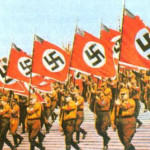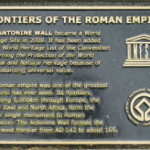What Made America Enter The First World War?
America did not initially enter World War I but watched closely after fighting broke out in 1914. As World War I continued, America finally entered The Great War. Find out what happened that made America enter the first World War.
The First World War Begins
World War I rightly became known as The Great War. The war initially waged in Europe without American conflict. The United States Holocaust Memorial Museum (USHMM) explains that June 28, 1914, assassinations of Archduke Franz Ferdinand, the heir to the Austro-Hungarian crown and his wife Archduchess Sophie, in Sarajevo led to hostilities that sparked WWI.
Deutsche Welle says that the Archduke and Archduchess arrived in Sarajevo after visiting German Emperor William II. Accepting an invitation to watch the maneuvers of the Austrian troops in Bosnia, the procession gave an attempted assassin the ideal opportunity to carry out an attack. Ferdinand saw something coming towards him and actually slapped the grenade out of the vehicle. Officials arrested the would-be attacker and the procession continued. A second assassin took position and shot the Archduke and the Archduchess and both died in their car.
Tensions arose between Austria-Hungary and Serbia, with the support of the German military command supporting Austria-Hungary. On July 28, 1914, Austria declared war on Serbia. Russia’s response was to mobilize its army. Germany asked Russia to stop their mobilization. Germany then sent an official notice to France to remain neutral. When Russia ignored Germany’s request, Germany declared war on Russia on August 1. France declined Germany’s demand to stay neutral and Germany then declared war on August 3.
The Great War had begun.
America Initially Stays Out Of The War
The American Government watched as an increasing number of European forces entered World War I. On August 23, Japan entered the war, declaring war first on Germany, honoring the Anglo-Japanese Alliance, and then declared war on Austria-Hungary two days later.
The Entente Powers, Great Britain, Serbia, Imperial Russia, fought the Central Powers of Austria-Hungary and Germany. As time went on, Portugal, Romania, Italy, and Greece joined the Allied Forces, while Ottoman Turkey and Bulgaria joined in the war, fighting with the Central Powers.
All hopes for a quick end to the war seemed to fade quickly. Still, the United States watched closely but did not join The Great War as fighting continued.
What Events Led To Entering The War?
President Woodrow Wilson ran on a campaign slogan of He Kept Us Out Of War. However, President Wilson recognized that Germany was quickly becoming more of a threat. Germany’s unrestricted submarine warfare, which Jim Garramone, writing for the U.S. Department of Defense, explains was considered the war on civilians. This came after German U-Boats sank three U.S. flagged ships.
On April 2, 1917, Wilson went before Congress, outlining reasons to declare war on Germany. On April 4, The U.S. Senate voted in favor of declaring war on Germany. While both Great Britain and France both wanted America to fight alongside them, America remained independent. In another Department of Defense article, Garramone says  that America declared war on Germany on April 6, 1917. By this time, New Zealand, Australia, Canada and South Africa had also joined Allied Forces.
that America declared war on Germany on April 6, 1917. By this time, New Zealand, Australia, Canada and South Africa had also joined Allied Forces.
President Wilson and Newton D. Baker, then U.S. Secretary of War selected Army General John J. Pershing to lead American Forces. The Selective Service implemented the draft and forces were trained. The U.S. became a powerful force in The Great War. The U.S. National Archives and Records Administration states that U.S. forces were, slow in organizing, but they were quick to learn how to fight on the Western front.
The Hundred Days Offensive resulted in the surrender of Central Powers. On November 11, 1918, at 11 am, fighting ceased and the Treaty of Versailles was signed on June 28, 1919.






